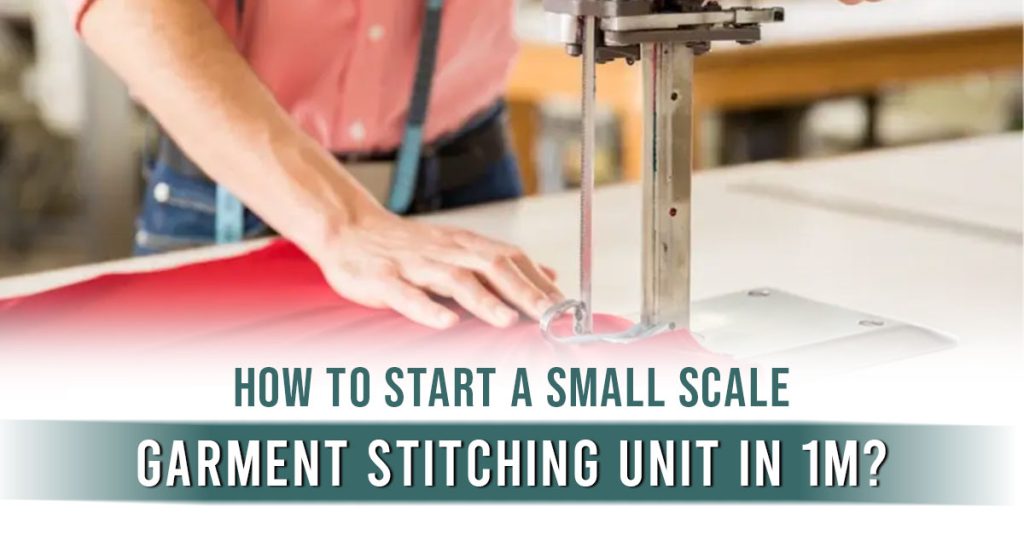How to start a small scale garment stitching unit in 1M?
With the rising demand for custom clothing, fashionwear, and local textile production, starting a small scale garment stitching unit can be a smart and sustainable business move. Whether you’re catering to boutiques, online stores, or your own brand, a stitching unit offers high flexibility and scalability. And the best part it’s entirely possible to set up within a 1 million PKR budget, especially in countries like Pakistan where skilled labor and textile access are readily available. Here’s how you can bring your stitching unit idea to life.
Planning
The first step is to decide what type of stitching unit you want to launch. Each category has its own stitching techniques, pattern demands, and machinery requirements. Start with a niche that you understand or have access to in terms of designs and buyers. This helps you focus your investment wisely, both in terms of materials and manpower. For a unit within a 1 million PKR budget, aim for small batch production with a lean team and a clear output goal, such as producing 30 50 pieces per day.
Location
You don’t need a fancy production floor to get started. A 300 500 sq. ft. space in a low rent commercial or home-based setup can work well in the beginning. What matters most is layout and organization. Divide your space into three areas which are cutting, stitching, and finishing/packing. Proper lighting, ventilation, and electrical wiring are essential for a smooth workflow and to keep your machines running without downtime. Use sturdy worktables, fabric storage racks, and wall mounted shelves to save space and keep things efficient.
Machinery and tools
Investing in the right machinery is key. For a small scale setup, 5 to 7 industrial sewing machines are sufficient to start production. Depending on your niche, you may also need a steam press, cutting machine, or buttonhole machine. Avoid overspending on high end or rarely used equipment in the beginning. Stick to tried and tested brands that offer good after-sales support. Within your 1M budget, you can allocate 400k to 500k PKR to machinery alone, with smart planning.
Reliable team
Your team is the backbone of your stitching unit. Start with 3 to 5 skilled tailors or machine operators, depending on your production target. Hiring locally or through referrals can help reduce costs while ensuring reliability. In addition to tailors, you’ll need one person to manage quality checks, finishing, and packing. Offer basic training to retain talent. Even in a small setup, discipline, timing, and task division make a big difference in output and consistency.
Raw materials
You’ll need to source quality fabrics, threads, trims, buttons, and packing materials. Begin by building relationships with wholesalers and fabric markets in cities like Lahore, Karachi, or Faisalabad, where you can get competitive rates. Avoid buying large stocks initially, work on a per order basis or in small batches to avoid tying up cash in inventory. Always test sample material before buying in bulk to avoid production issues.
Quality control
Your stitching unit must have a defined production flow to avoid delays and wastage. Start with cutting, move to stitching, then finishing, and finally packing. Each garment should be checked at two stages after stitching and before packing. This helps maintain quality and reduce client complaints or returns. Create sample patterns or tech packs for your tailors to follow, and use measuring tools to ensure consistency in sizes and finishes.
Branding
Marketing doesn’t need to eat into your budget. Use WhatsApp groups, local Facebook marketplace listings, and word of mouth to reach nearby retailers and customers. Share before and after photos of stitched pieces, behind the scenes videos from your unit, and testimonials. Partner with small clothing brands as their backend production unit, which can ensure steady demand with minimal customer handling on your end.
Budget breakdown
| Expense Category | Estimated Cost (PKR) |
| Sewing Machines | 350,000 |
| Cutting Tables | 50,000 |
| Ironing Finishing | 40,000 |
| Rent Advance | 100,000 |
| Labor Salaries | 250,000 |
| Raw Material & Accessories | 150,000 |
| Marketing Expenses | 60,000 |
| Total | 1,000,000 |
Revenue model
In your initial months, focus on high margin, low-volume products such as custom stitched women’s dresses or kidswear. A single well finished suit can earn you 500 to 800 PKR in net profit. If your unit produces 10 15 such suits per day, you can expect a healthy monthly return even in the early phase. As orders grow, reinvest profits to buy more machines or shift to semi bulk production. You could eventually supply to ecommerce stores, local brands, or even export small batches.
| Revenue & Expense Component | Estimated Amount (PKR) |
| Total Monthly Revenue | 218,400 |
| Labor Salaries | 120,000 |
| Utilities & Rent | 25,000 |
| Admin & Misc. Costs | 10,000 |
| Total Monthly Expenses | 155,000 |
| Net Monthly Profit | 63,400 |
Category profit margin
| Garment Category | Profit Margin (%) |
| Women’s Formal Wear | 45.8% |
| Women’s Casual Suits | 42.9% |
| Men’s Kurta/Shalwar | 41.2% |
| Children’s Clothing | 40.0% |
| School Uniforms | 28.9% |
| Western Tops | 41.6% |
| Abayas & Gowns | 40.0% |
Conclusion
Starting a small scale garment stitching unit within a 1 million PKR budget is not only possible, it’s a practical and potentially profitable move for aspiring entrepreneurs, especially in a country like Pakistan where the textile and apparel industry continues to thrive. The beauty of this business lies in its scalability, low entry barrier, and constant demand across seasons. Whether it’s formal wear for weddings, everyday casual suits, uniforms for schools, or western outfits for growing online brands, the variety of opportunities is immense.



Do you mind if I quote a few of your posts as long as I provide credit and sources back to your weblog? My blog site is in the exact same area of interest as yours and my users would truly benefit from some of the information you present here. Please let me know if this ok with you. Cheers!